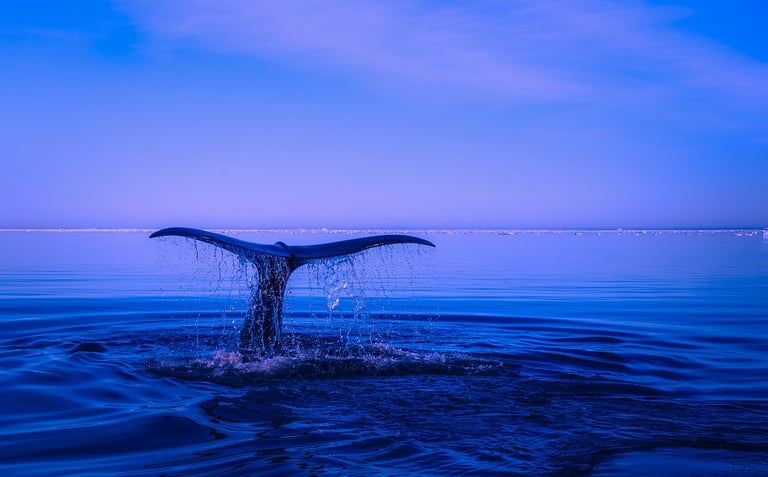Why is the sea blue? The Hidden Science Behind Its Colour
Ever wondered why the sea looks blue? Dive into the hidden science behind its mesmerizing hue!
GEOVISTA


The sea—vast, deep, and endlessly blue—has mesmerized humankind for centuries. Poets liken it to liquid sapphire, stretching toward infinity, while scientists see it as a canvas painted by the laws of physics. But why does the ocean wear this celestial hue? The answer is neither mere reflection nor magic; it is the delicate interplay of light, water, and the nature of colour itself.
Sunlight, though appearing white, is a spectrum of colours, each with a different wavelength. When it meets the ocean, two key processes determine the colour we see:
Absorption of Light
Water acts like a selective filter, absorbing certain wavelengths more than others. Red, orange, and yellow light (longer wavelengths) are absorbed quickly, disappearing within a few meters.
Shorter wavelengths, like blue and green, penetrate deeper and are scattered in all directions, making blue the most dominant colour to the human eye.
Rayleigh Scattering
Light doesn’t just travel straight—it scatters when it encounters molecules and tiny particles.
This effect, known as Rayleigh scattering, was first explained in 1871 by Lord Rayleigh (John William Strutt), an esteemed British scientist and a pioneer in the fields of physics and mathematics.
Shorter wavelengths (blue and violet) scatter more than longer ones (red and yellow). While violet light is scattered even more than blue, our eyes are more sensitive to blue, and some violet is absorbed by the atmosphere, allowing blue to dominate.
It is a common belief that the ocean appears blue because it mirrors the sky. While sky reflection does contribute slightly, it is not the primary reason. Even on overcast days, when the sky is grey, deep waters retain their characteristic blue, proving that the colour comes from within the water itself—through absorption and scattering.
Why Does the Ocean Change Colours?
The sea is not always blue; it shifts in colour depending on its surroundings and contents:
Green Waters: Phytoplankton’s Influence
Microscopic marine plants called phytoplankton contain chlorophyll, which absorbs red and blue light while reflecting green, tinting the water.
Golden and Brown Waters: Sediment and Minerals
Near shores and river mouths, sediments, and organic matter scatter light differently, producing shades of brown, yellow, or murky green.
Turquoise and Aqua: The Effect of Shallow Waters
In shallower regions, light reflects off the seafloor, coral reefs, or sandy bottoms, blending blues with greens and whites to create stunning turquoise hues.
The ocean’s colour changes with depth. In shallow waters, sunlight reflects off the bottom, but in the vast depths of the open sea, almost all red and yellow light is absorbed. Only blue remains, painting the deep ocean in rich, endless indigo.
As we conclude, we realize that the ocean’s blue is not merely a reflection of the sky—it is a story of physics, light, and depth. Absorption and scattering shape the hues we see, from the sunlit turquoise of tropical shores to the profound navy of the abyss. It is a colour born not of mirrors, but of movement; not of illusion, but of the very nature of light itself.
So, the next time you stand by the shore, watching the waves shimmer under the sun, know that the sea’s blue is more than a sight—it is a phenomenon written in light. 🌊
Subhalakshmi Buragohain
Hyderabad
Endless blue, thriving with life.


Green waters, shaped by light and life beneath the surface.
